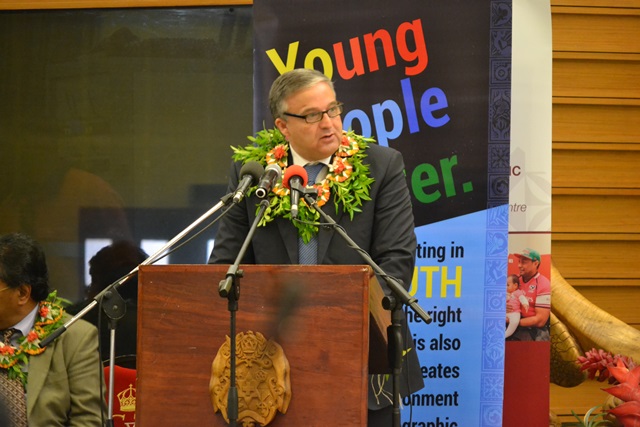UNFPA Pacific, Nuku'alofa (November 19, 2014) - Never before has there been so many young persons between the ages of 10 and 24 in the world, and with 1.8 billion of adolescents and youth spread across the globe, humanity may never again know this cohort with so much potential for progress.

The United Nations Population Fund (UNFPA) has released its 2014 flagship report, the State of World Population. Entitled The power of 1.8 billion adolescents, youth and the transformation of the future the report's Pacific launch was held yesterday afetrnoon, November 19, by Her Royal Highness Crown Princess Sinaitakala Tuku'aho in Nuku'alofa, Tonga.
The report which reminded readers that by 2010, young persons had already comprised 28 per cent of the world population emphasizes the critical importance of investing in young people today to effectively harness the power represented by 1.8 billion strong youth cohort.
The report points to the fact that though adolescent fertility rates have fallen, 20,000 girls under 18 years continue to give birth daily in developing countries, underlining that within this generation are 600 million adolescent girls with specific needs and challenges. Noting as well that youth population is growing the fastest in poorest nations, the report however urged a positive response.
"Education is critical and must be relevant to nations' economies to ensure young people progress to professional lives with knowledge and skills that will encourage innovation in addressing issues their communities, countries and the region may be grappling with," UNFPA Pacific Director and Representative Dr Laurent Zessler said.
"As equally important is the centrality of investment in health in any national or regional development plan, particularly in sexual and reproductive health and rights for when young people can make a healthy transition from adolescence to adulthood, options expand for the future.
"And with the right policies and investments, countries can realize a demographic dividend."
The demographic dividend, the situation when the number of the working population is higher than dependents (who are usually children and the elderly) which then creates more resources for economic development, contributed to a 6 per cent annual average growth in per capita income between 1965 and 1995.
The first steps to realizing and taking advantage of the demographic dividend is the reduction of mortality and fertility rates. As humanity prepares for the post-2015 global development agenda, the report states that the success of the international community's next big push for sustainable development is dependent on the degree of involvement by young people.


